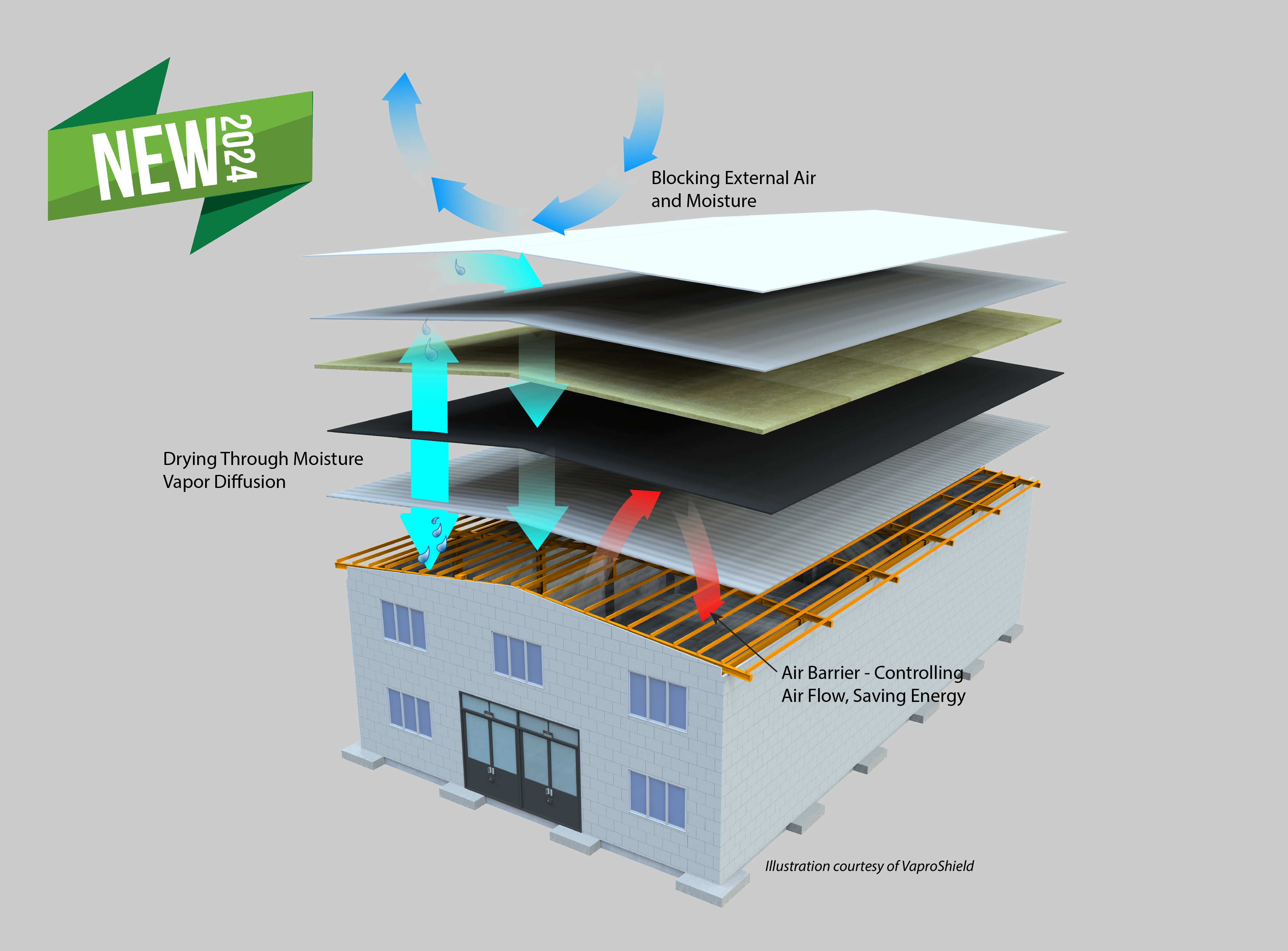Managing Roofing Risks: Air and Vapor Control
Creating resilient and sustainable building envelopes
Sponsored by VaproShield | Presented by Scott D. Wood
Webinar On-Demand
Every year, contractors install millions of square feet of commercial roofing for both new construction and re-roofing projects. Traditionally, low-slope roofing systems have prioritized vapor restriction over air tightness. In this newly accredited AIA presentation, we will delve into the advancements in air barrier technology and permeable vapor retarder membranes, and their influence on building performance.
This webinar aims to equip you with the insights needed to make informed choices between air/vapor barriers and permeable vapor retarders for low-slope roofing, enhancing your proficiency in creating resilient and sustainable building envelopes.

Image courtesy of VaproShield
 |
Scott D. Wood is a Senior Building Scientist at VaproShield, and is responsible for product QA/QC on manufactured materials and investigation/testing of properties for new product development. He provides technical support for the company’s representatives, client inquiries, and assists in development--updating product literature and creating VaproShield’s AIA presentations. |
VaproShield’s innovative wall and roof air barrier membranes mitigate moisture damage and control air infiltration leading to enhanced indoor air quality for occupants, increasing building longevity and improving long term energy performance.
Originally published in Building Enclosure
Originally published in April 2024
LEARNING OBJECTIVES
- Recognize when, where, and why to use an air barrier vs. vapor barrier vs. vapor permeable retarder in low-slope roofing applications.
- Describe the technology changes of low-slope roofing systems over time and their importance to building performance.
- Gain clarity on how building science fundamentals, specifically heat, air, and moisture management, influence both energy efficiency and compliance with regulatory requirements.
- Identify how to mitigate common issues from moisture and air movement that impact occupant’s health and safety.











